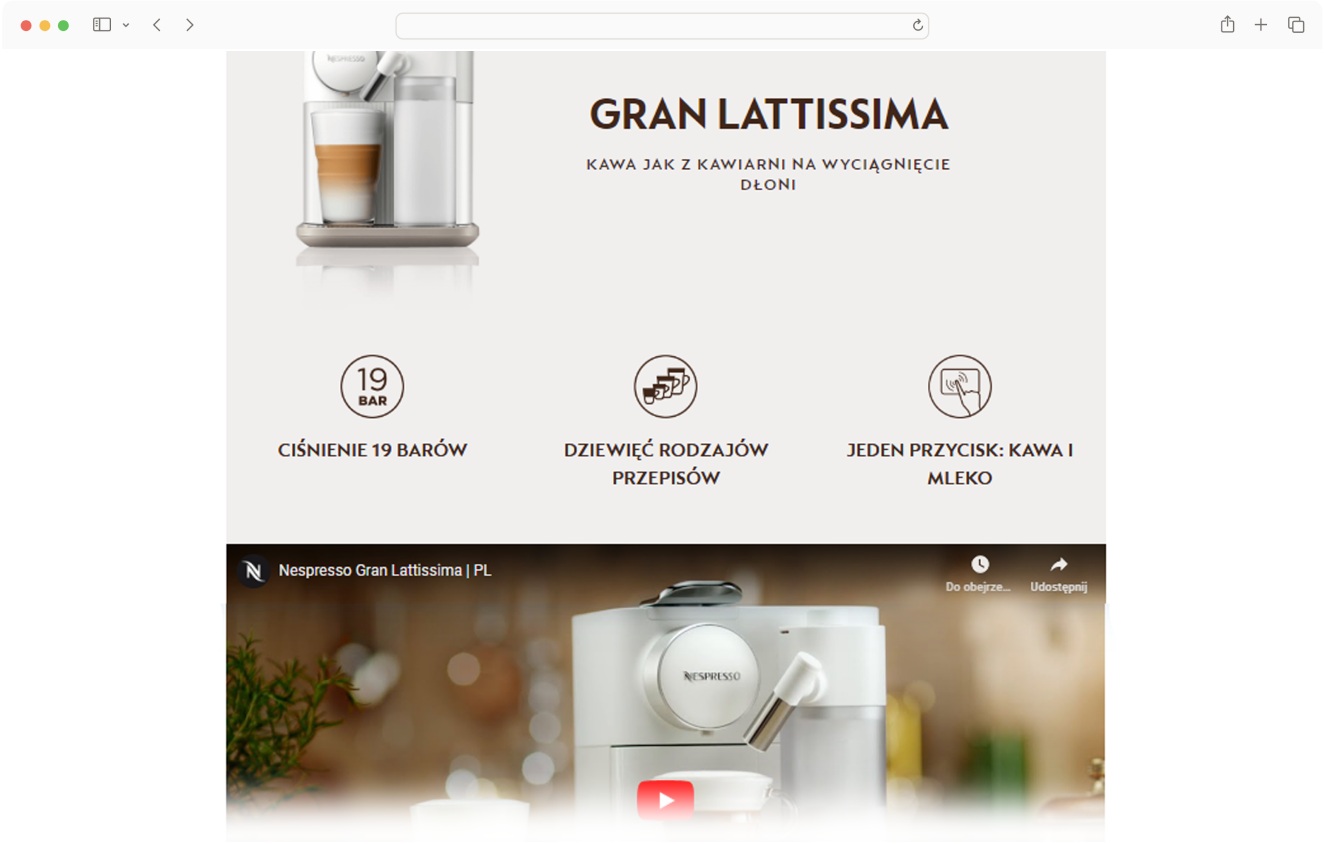The most important elements of a product card in consumer acquisition
A product card is a well-thought-out template that consists of various modules. Each of them plays an important role, influencing the sales experience of consumers in an appropriate way. Learn the elements that will convince the customer of your products.
Distinctions
They are presented in the form of simple infographics designed to evoke relevant associations in the consumer. Concise content outlines the product’s key features that set it apart from the competition. The interactive module encourages people to read the seemingly hidden content, thus appearing as an intuitive solution that is not only a condensed message, but also an aesthetically pleasing graphic and textual solution.
It is a source for obtaining quick and accessible product knowledge. At the same time, it does not distract the user with too much information and stimuli. The hallmarks are interactivity, which goes hand in hand with user-friendly UX.
Hotspots
An interactive mechanism that does a great job of showing the product’s significant advantages. Small graphic formats (e.g., BuleDot) conceal a brief but informative description of a specific item or equipment that appears through a hoover. Thoughtful placement of hotspots interacts with the consumer’s imagination and allows them to interact with the product.
The flexibility of this solution allows the product to be placed in different contexts and show specific functions in variable situations – for example, with the doors of household appliances open and closed. This is made possible by the content hidden under the pulsating plus symbols.

Expanded descriptions
This is a module that consists of graphics and just longer descriptions (extended) preceded by interesting headlines. The text focuses on specific functions and uses of the product, so that the consumer can better understand the advantages of the product range, and thus learn how to use it in everyday life. By including benefit language, the content is assimilated easily and efficiently, shortening the distance between the brand and the customer.
Engaging graphics
Boosting the descriptions with aesthetic graphics, showing specific features, allows to better illustrate the product, present it in an attractive arrangement and complement the verbal layer. In this way, the customer gets a practical module that replaces his consultation in the stationary store. The graphic layer is characterized by good quality and thoughtful layout, as well as a color scheme characteristic of the brand identity, which allows for consistent communication. They can have a varied layout – with a photo on the left or right side, as well as a dynamic graphic form, i.e. animation in MP4 format, which responds to current motion design trends.
Icons
A module in which infographics and text form a coherent composition, and its design is somewhat related to the aforementioned distinctive features. The difference, however, is that they largely supplement the information appearing in the preceding modules. They contain a simple graphic, under which fits a concise text describing the product feature in a succinct manner. In this section, features or applications appear in the form of an addendum of additional information, so that at the end of reviewing the product card, the customer is reacquainted with the specific strengths that are expected to influence his purchase decision.
FAQ
The well-known FAQ solution also plays an important role in product cards. It includes questions and answers not covered in previous texts, which may provide important information for the consumer. An interactive mechanism allows you to expand the segment (question) and show the content with a specific answer. This module includes graphics depicting the product, which makes the message more pleasant to absorb and influences the perception of the recipient.
During the purchase, many questions and doubts arise in the consumer’s mind. At this stage, he may not be able to name what he needs and what answers he expects. Therefore, the FAQ module is essential for verbalizing specific questions and then presenting the consumer with a pertinent answer. It’s quite a convenience that taps into the deep motivations of the buyer and gives him a specific portion of information he doesn’t even know he’s expecting.
What to avoid in e-commerce channels?
When designing a product card, you need to be careful not to go to extremes when creating the aforementioned elements. A plethora of means of expression can have the opposite effect and permanently discourage consumers, so avoid:
- Too many icons – this will cause considerable irritation among customers, as confirmed by neuromarketing studies
- Redundancy in interactive mechanisms – will introduce a sense of overwhelm and even chaos that will lead to a quick abandonment of further familiarization with the product’s advantages,
- Irrelevant information and overly long descriptions – voluminous texts with uninteresting information will wear out the consumer,
- Technical language – this creates anxiety and effectively discourages, as the recipient does not understand the message,
- Misguided suggestions of other offers on the card – targeting other categories disrupts the shopping process and generates confusion.
When designing product cards, we pay attention to a number of factors that are of considerable importance to the effectiveness of their implementation and later functioning in the online space. We take care of all the elements mentioned above, as you will see by learning about our implementation.
Read also
- Rich content, Product card
- Maciej Nowacki
- Rich content, Product card
- Maciej Nowacki
- Rich content, Product card
- Mateusz Pytlak
Check out our Linkedin
© 2023 | Privacy Policy